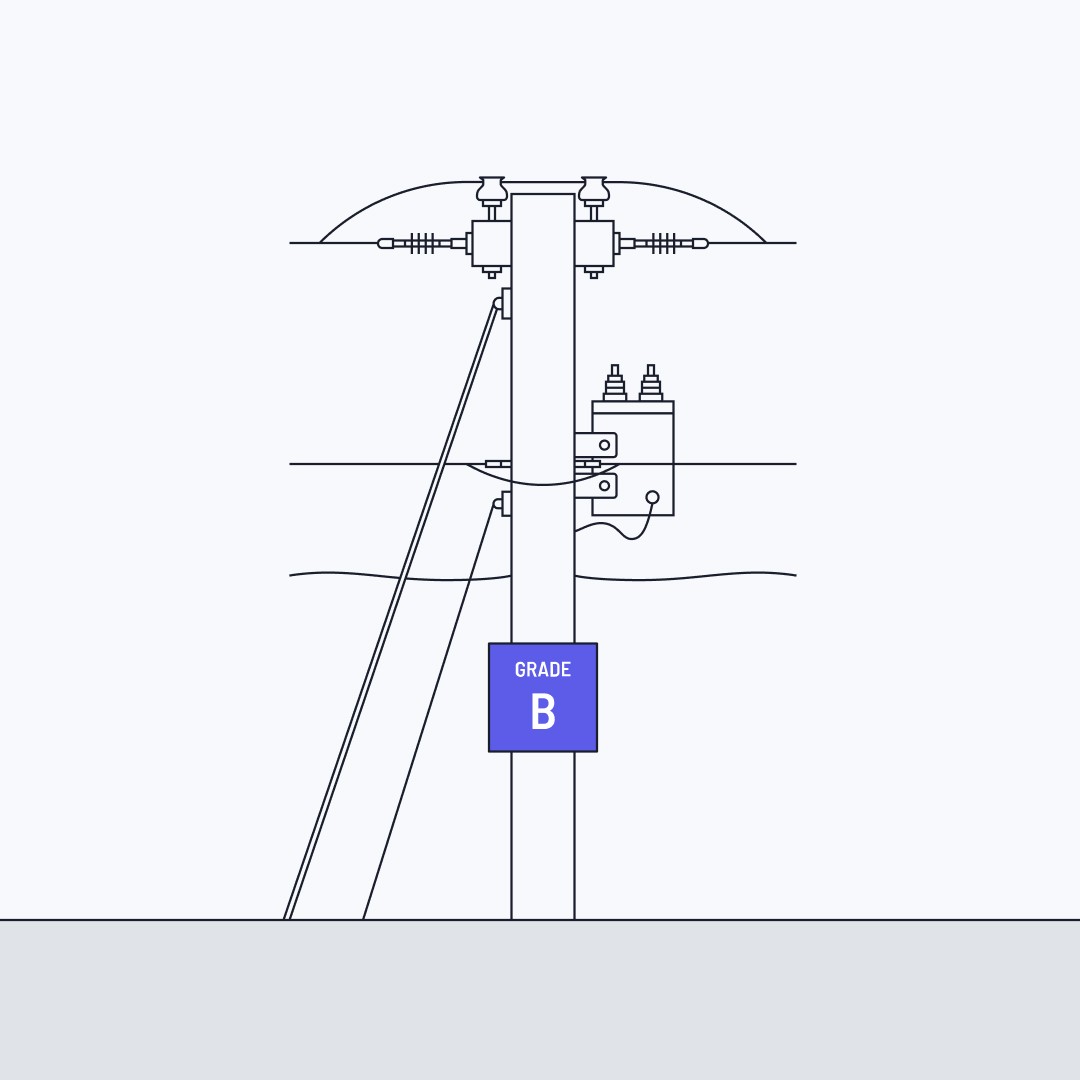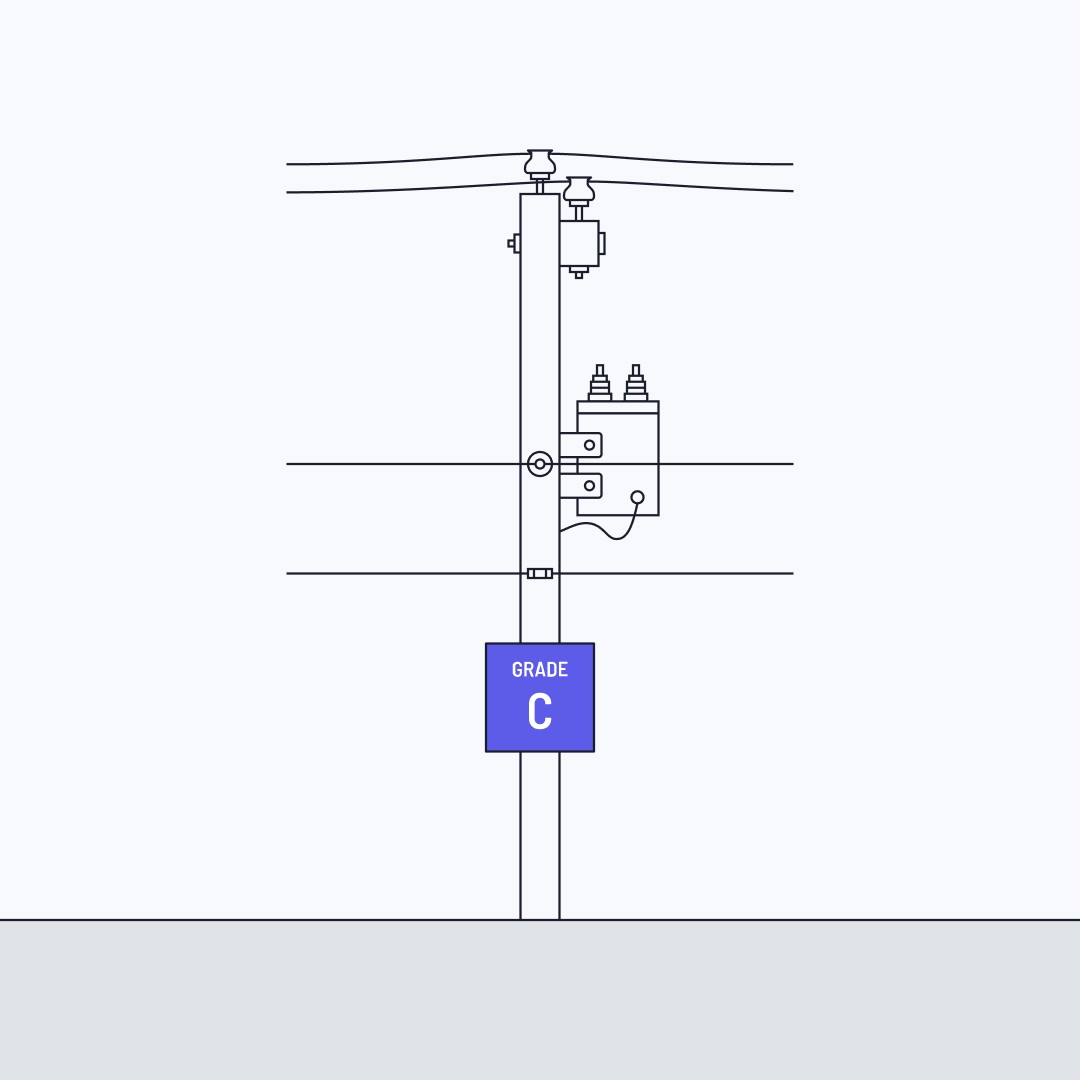The PoleOS™ Company
NESC Grades of Construction
The National Electric Safety Codes (NESC) offers a set of minimum guidelines for designing and constructing electric infrastructure.
Under the NESC, utility poles can fall under three grades of construction. The grade generally determines the margin of safety. Generally, higher grades of construction mean a higher degree of system resiliency.
The three construction grades are:
GRADE B: High margin of safety
Required when the pole supports spans that cross limited access highways, railroads, and navigable waterways.

GRADE C: Most common and provides a basic margin of safety
- Utilized for the typical power and joint-use distribution pole
- Two separate grades for line crossings and elsewhere

GRADE N: The lowest grade of construction
- Mostly used for emergency and temporary construction
- Not used for poles permanently supporting electric facilities
For each NESC construction grade, safety factors – both load factors and material strength factors – are applied during the structural analysis process.
- Load factors are safety factors that increase the loads applied to the structure. Wind, wire tension, and the weight of equipment and ice all have different factors.
- Strength factors are safety factors that decrease the allowed strength of poles and equipment. Wood, metal, concrete, and fiberglass all have specific strength factors that are applied.
Each grade of construction requires different load and strength safety factors, with Grade B requiring the strongest construction.
Why are these requirements so important? Most importantly, they are intended to keep the public and utility workers safe. They set the bar for mitigation against environmental factors and help measure a system’s resilience.
Know the Code. Stay safe.
Learn more about NESC and OSHA training classes with IKE
Grant Glaus is a registered professional electrical engineer with 25 years of experience in electric utility engineering, including line design, planning studies, joint use, and teaching NESC®, OSHA, and distribution line design classes. He has served on NESC® Subcommittee 5, Overhead Lines – Strengths and Loadings since 2006.
The latest from the IKE Wire
Safety and speed in pole data collection
Data collection is at the heart of building and maintaining our power and communicati...
Read MoreMy message for Fiber Connect goers: Now is the time to tackle inefficiencies in deployment processes
Last week, I spent a busy few days in Nashville for the Fiber Broadband Association�...
Read MoreVideo Chat: Challenges and Opportunities for Power Delivery Leaders (Part 1)
Overview Energy industry expert and author, Peter Kelly-Detwiler, moderates a discuss...
Read MoreSubscribe to the IKE Wire
Get the latest insights on data acquisition and structural analysis from the ikeGPS experts.
